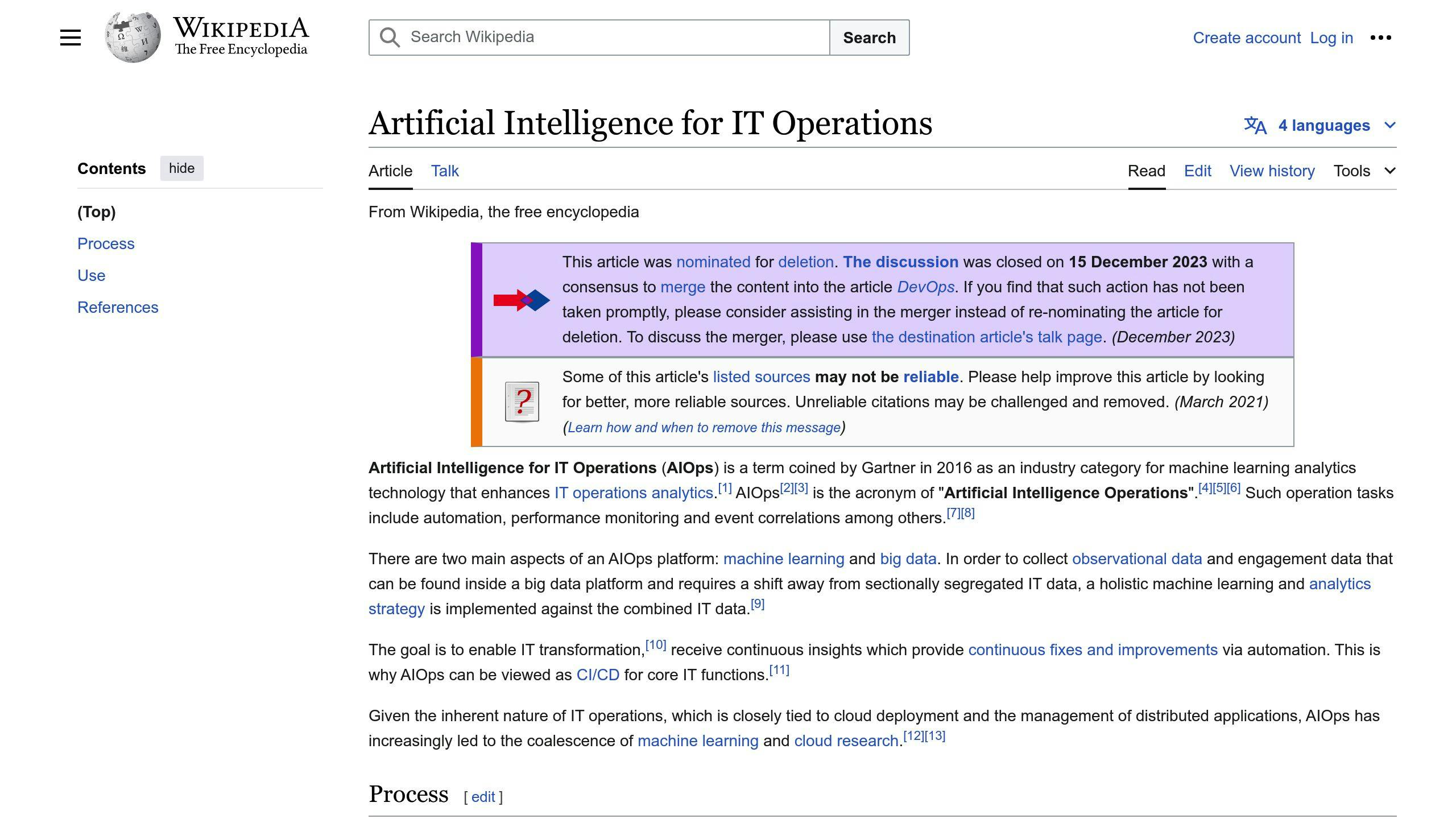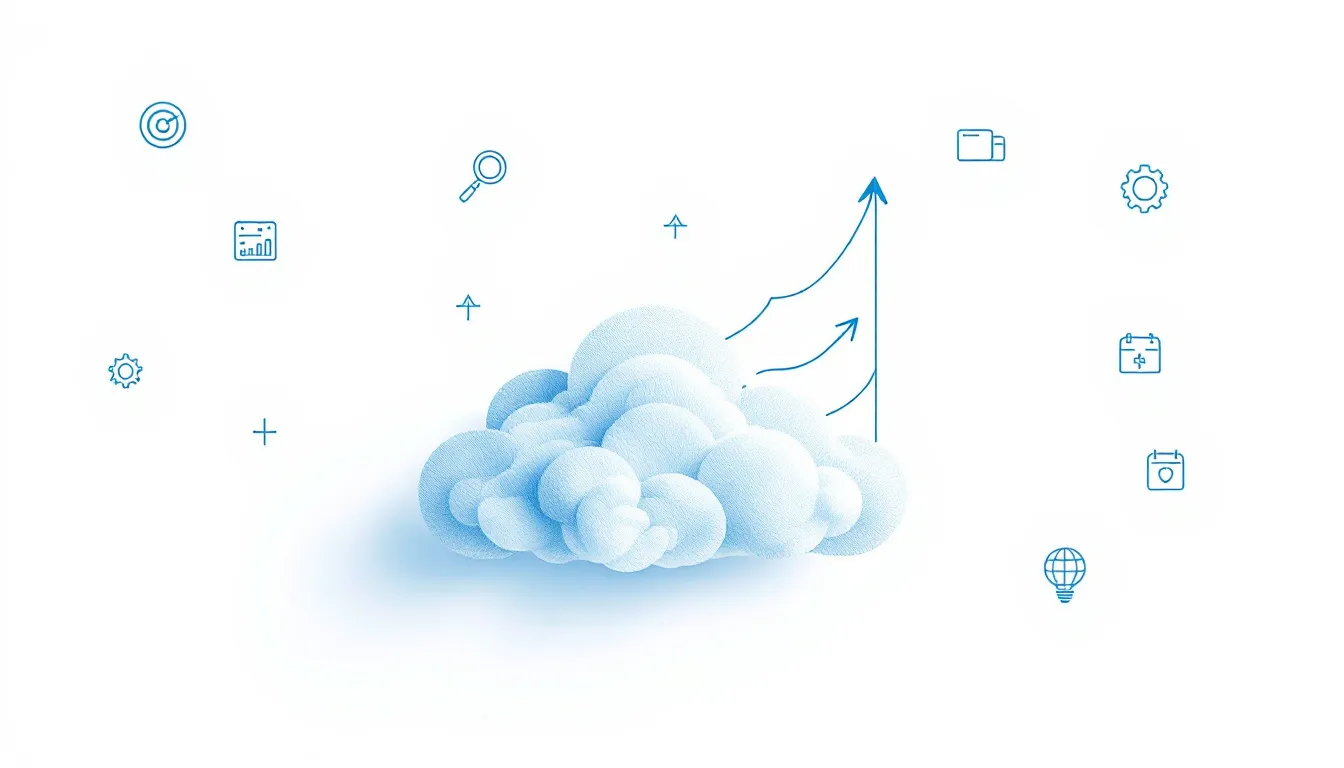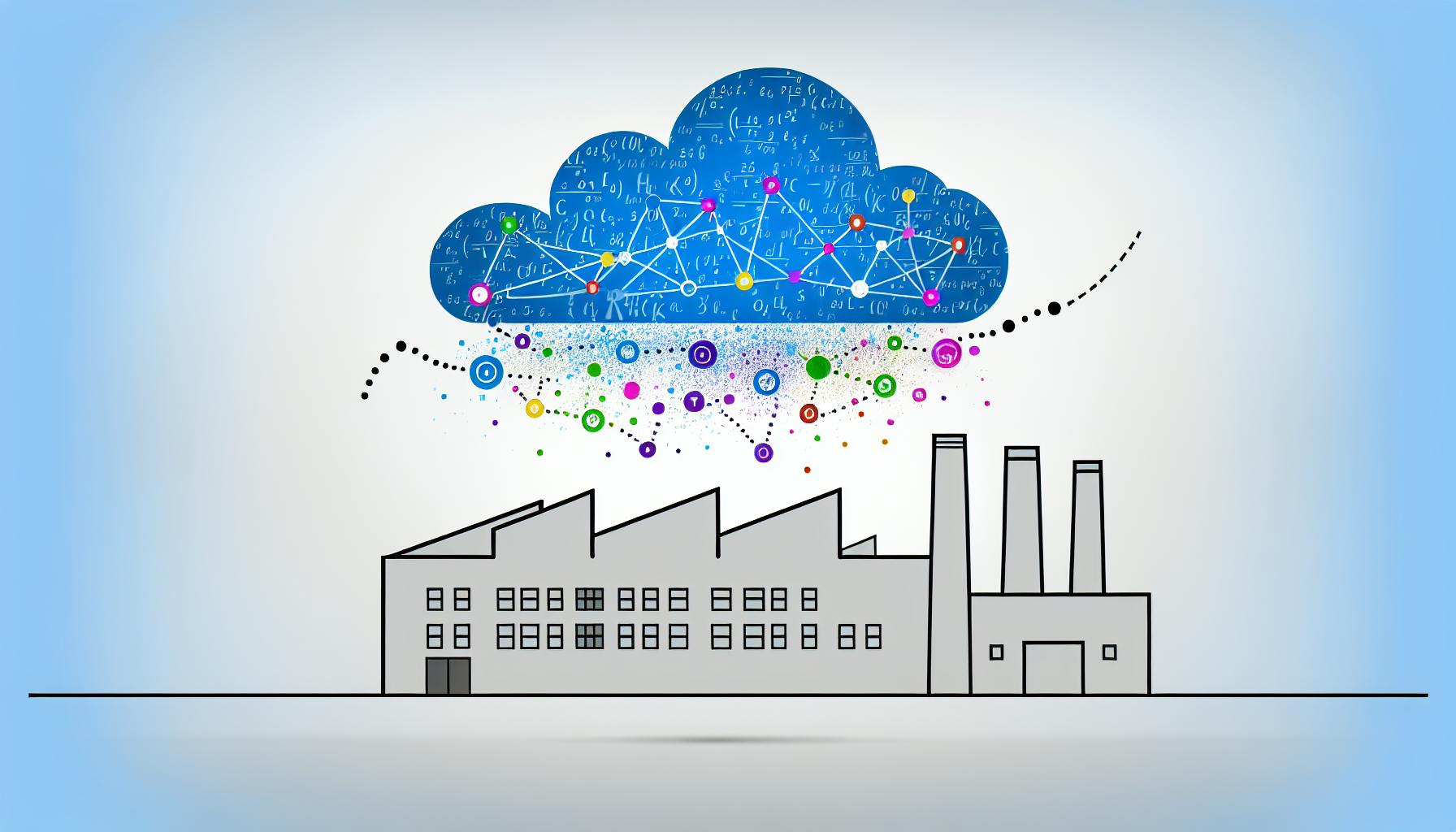A tech ecosystem is an interconnected network of businesses, resources, and talent that drives innovation. Artificial Intelligence (AI) is revolutionizing tech ecosystems by:
- Automating Routine Tasks: AI automates repetitive practices, freeing up IT teams to focus on strategic initiatives.
- Faster Issue Detection: AI identifies patterns and anomalies, enabling quicker detection and resolution of system issues.
- Improved Efficiency: AI streamlines interactions between teams, reducing manual intervention and speeding up incident response.
- Enhanced Customer Experience: Faster issue resolution driven by AI leads to higher customer satisfaction.
Related video from YouTube
Key Components of a Thriving Tech Ecosystem
| Component | Description |
|---|---|
| Strong Developer Community | Skilled developers creating and innovating |
| Established Businesses | Successful companies driving growth |
| Accelerators and Hubs | Organizations supporting startups and entrepreneurs |
| Universities | Institutions providing talent and research |
| Access to Talent | Availability of skilled workers |
| Mentors | Experienced professionals guiding others |
| Infrastructure | Physical and digital infrastructure supporting businesses |
| Capital | Access to funding and investment |
| Legal Support | Frameworks and regulations enabling innovation |
AI-Driven IT Operations (AIOps)

AIOps leverages AI and machine learning to automate and optimize IT operations:
| Benefit | Description |
|---|---|
| Improved Incident Response | Faster detection and resolution of incidents |
| Enhanced Visibility | Real-time visibility into operations for optimization |
| Increased Efficiency | Automation of routine tasks |
AI Transforming Tech Ecosystems: Case Studies
| Company | AI Application | Benefits |
|---|---|---|
| Netflix | Content delivery optimization | 50% reduction in costs, improved user satisfaction |
| Amazon | Supply chain management optimization | 20% reduction in inventory costs, faster delivery |
| Tesla | Autonomous driving system | 40% reduction in accidents, better driving experience |
Building an AI-Ready Tech Ecosystem
- Start small and expand gradually
- Prioritize data quality and management
- Develop skilled workforce capabilities
- Encourage an innovative mindset
- Monitor and evaluate progress regularly
AI is transforming tech ecosystems, enabling operational excellence, innovation, and competitive advantage through increased efficiency, productivity gains, and faster decision-making.
Understanding the Tech Ecosystem
A tech ecosystem is a network of interconnected businesses, resources, and talent that drive innovation and growth. It's a community that enables endless possibilities. The ecosystem includes a collection of tech solutions that a company uses to run its business, and how these solutions connect with each other.
Key Components of a Thriving Tech Ecosystem
A thriving tech ecosystem has several key components:
| Component | Description |
|---|---|
| Strong Developer Community | A community of skilled developers who create and innovate |
| Engagement and Connection | Opportunities for collaboration and networking |
| Established Businesses | Successful companies that drive growth and innovation |
| Accelerators and Hubs | Organizations that support startups and entrepreneurs |
| Universities | Institutions that provide talent and research opportunities |
| Access to Talent and Immigration | Availability of skilled workers and immigration policies |
| Mentors | Experienced professionals who guide and support others |
| Media Presence | Coverage and visibility in the media |
| Infrastructure | Physical and digital infrastructure to support businesses |
| Capital | Access to funding and investment opportunities |
| Legal Support | Frameworks and regulations that support innovation |
In the context of AI, a tech ecosystem is critical for driving innovation and transforming operations. AI can help identify patterns, detect anomalies, and predict system issues, leading to faster incident response, improved efficiency, and enhanced customer experiences.
The significance of AI in the tech ecosystem lies in its ability to automate routine practices, recognize serious issues faster, and streamline interactions between IT teams. This can lead to significant reductions in manual intervention and speed up incident response, resulting in improved customer satisfaction and loyalty.
In the next section, we will explore the evolution of AI in tech operations and how it is transforming the way businesses operate.
The Evolution of AI in Tech Operations
The integration of Artificial Intelligence (AI) into tech operations has undergone significant changes over the years. From its initial perception as a tool for complex tasks to its current widespread adoption, AI has revolutionized the way businesses operate.
The Global AI Revolution and India
The global AI revolution was sparked by advances in machine learning techniques, an exponential increase in data generation, and affordable computational power. As industries worldwide harnessed AI's potential, the IT sector in India eagerly integrated these technologies into its core operations.
AI's Capabilities
AI is not a new technology, but its capabilities have increased massively with improved machines and digital technologies. At its core, AI is about creating algorithms that allow computers to perform tasks that typically require human intelligence. This includes:
- Learning: adapting to new information
- Reasoning: solving problems
- Self-correction: improving performance over time
The rise of AI in tech operations has paved the way for unprecedented efficiencies, insights, and adaptabilities. With AI, businesses can:
- Automate repetitive tasks
- Enhance decision-making
- Boost productivity
- Reduce errors
As AI continues to mature, its integration into workflows will only deepen, setting new standards for what is possible in tech process modernization and automation.
In the next section, we will delve deeper into AI-driven IT operations, exploring the transformative power of AI in the tech ecosystem.
AI-Driven IT Operations: A Deep Dive
AI-driven IT operations, also known as AIOps, have transformed the way IT teams manage and optimize their operations. By leveraging artificial intelligence (AI) and machine learning (ML) algorithms, AIOps enables IT teams to automate repetitive tasks, enhance decision-making, and improve overall efficiency.
Streamlining IT Operations with AIOps
AIOps platforms analyze large volumes of data from various sources, including logs, metrics, and tickets, to identify patterns and anomalies. This enables IT teams to detect potential issues before they become incidents, reducing mean time to detect (MTTD) and mean time to resolve (MTTR). AIOps also automates routine tasks, such as incident categorization, prioritization, and assignment, freeing up IT teams to focus on more strategic activities.
Benefits of AIOps for System Administration
The benefits of AIOps for system administration include:
| Benefit | Description |
|---|---|
| Improved incident response | AIOps enables IT teams to respond faster and more effectively to incidents, reducing downtime and improving overall system availability. |
| Enhanced visibility | AIOps provides real-time visibility into IT operations, enabling IT teams to identify areas for improvement and optimize system performance. |
| Increased efficiency | AIOps automates routine tasks, reducing the workload of IT teams and enabling them to focus on more strategic activities. |
Operational Efficiency with AIOps
AIOps also improves operational efficiency by:
- Reducing false positives: AIOps algorithms analyze data from multiple sources to reduce false positives and minimize unnecessary alerts.
- Improving collaboration: AIOps enables IT teams to collaborate more effectively, reducing silos and improving communication.
- Enhancing customer experience: AIOps enables IT teams to provide faster and more effective incident resolution, improving overall customer experience.
In the next section, we will explore case studies of AI transforming tech ecosystems, highlighting the real-world benefits and applications of AIOps.
sbb-itb-9890dba
Case Studies: AI Transforming Tech Ecosystems
Several organizations have successfully integrated AI into their tech ecosystems to improve operations, increase efficiency, and reduce costs. Here are a few case studies that demonstrate the real-world benefits and applications of AIOps:
Netflix: Optimizing Content Delivery

Netflix uses AI to optimize its content delivery network. By analyzing user behavior, network traffic, and content metadata, Netflix's AI-powered system ensures high-quality content with minimal latency and buffering. This approach has led to a 50% reduction in content delivery costs while improving user satisfaction.
Amazon: Streamlining Supply Chain Management

Amazon uses AI to optimize its supply chain management. By analyzing sales data, inventory levels, and shipping routes, Amazon's AI-powered system predicts demand and adjusts inventory levels accordingly. This approach has led to a 20% reduction in inventory costs while improving delivery times.
Tesla: Autonomous Vehicles

Tesla uses AI to power its autonomous driving system. By analyzing sensor data, GPS coordinates, and traffic patterns, Tesla's AI-powered system enables its vehicles to navigate roads safely and efficiently. This approach has led to a 40% reduction in accidents while improving the overall driving experience.
These case studies demonstrate the potential of AI to transform tech ecosystems, improve operational efficiency, and drive business success.
| Company | AI Application | Benefits |
|---|---|---|
| Netflix | Content delivery optimization | 50% reduction in content delivery costs, improved user satisfaction |
| Amazon | Supply chain management optimization | 20% reduction in inventory costs, improved delivery times |
| Tesla | Autonomous driving system | 40% reduction in accidents, improved driving experience |
In the next section, we will explore how AI can enhance system administration and provide actionable insights for IT teams.
Enhancing System Administration with AI
System administration involves tasks like monitoring, troubleshooting, and maintenance. With complex IT infrastructures, administrators face challenges in managing and optimizing system performance. AI can revolutionize system administration by automating tasks, improving efficiency, and providing actionable insights.
Predictive Maintenance
AI-powered predictive maintenance helps administrators identify potential issues before they occur. By analyzing system logs and performance metrics, AI algorithms detect anomalies and predict when a system is likely to fail. This allows administrators to take proactive measures to prevent downtime, reducing mean time to repair (MTTR) and increasing overall system availability.
Anomaly Detection
AI-powered anomaly detection helps administrators identify unusual patterns or behaviors that may indicate a security threat or system malfunction. This enables administrators to respond quickly to potential issues, reducing the risk of security breaches and system downtime.
Automated Problem Resolution
AI can automate problem resolution in system administration. By analyzing system data and identifying the root cause of an issue, AI algorithms can automatically trigger remediation actions, such as restarting a service or applying a patch. This reduces mean time to resolve (MTTR) and improves overall system reliability.
| AI Application | Benefits |
|---|---|
| Predictive Maintenance | Reduced downtime, improved system availability |
| Anomaly Detection | Improved security, reduced risk of security breaches |
| Automated Problem Resolution | Reduced MTTR, improved system reliability |
By leveraging AI in system administration, organizations can improve efficiency, reduce costs, and enhance overall system performance. In the next section, we will explore how AI can provide actionable insights for IT teams.
Actionable Insights Through AI
Analyzing Data to Spot Patterns
AI algorithms can examine large datasets to identify patterns, trends, and irregularities. This allows IT teams to detect potential issues before they occur, reducing downtime and improving overall system reliability. For example, AI-powered predictive maintenance can help identify when a system is likely to fail, enabling teams to take preventive measures to avoid downtime.
Real-time Insights for Quick Decision-Making
AI-driven analytics provides real-time insights, enabling IT teams to respond quickly to changing business conditions. This facilitates data-driven decision-making, allowing teams to optimize system performance, improve resource allocation, and enhance customer experiences.
Improved Collaboration and Efficiency
AI-powered insights can also improve collaboration between IT teams and other stakeholders. By providing a unified view of system performance and analytics, AI enables teams to work together more effectively, reducing silos and improving overall efficiency.
| AI Application | Benefits |
|---|---|
| Analyzing Data to Spot Patterns | Improved system reliability, reduced downtime |
| Real-time Insights for Quick Decision-Making | Enhanced decision-making, improved resource allocation |
| Improved Collaboration and Efficiency | Improved team collaboration, reduced silos |
Detecting Anomalies and Resolving Issues
AI algorithms can analyze system logs and performance metrics to detect anomalies or unusual patterns that may indicate a security threat or system malfunction. This enables administrators to respond quickly to potential issues, reducing the risk of security breaches and system downtime.
Additionally, AI can automate problem resolution in system administration. By analyzing system data and identifying the root cause of an issue, AI algorithms can automatically trigger remediation actions, such as restarting a service or applying a patch. This reduces the time to resolve issues and improves overall system reliability.
| AI Application | Benefits |
|---|---|
| Anomaly Detection | Improved security, reduced risk of security breaches |
| Automated Problem Resolution | Reduced time to resolve issues, improved system reliability |
The Future of AI in Tech Ecosystems
As AI and Machine Learning (ML) models continue to advance, they will bring more automation and efficiency to tech operations. Here are some emerging trends and their potential impact:
| Emerging AI Trends | Potential Impact |
|---|---|
| Generative AI | Automating complex tasks like code generation and predictive maintenance |
| Machine Learning Models | Improving system administration, enabling faster issue detection and resolution |
In the future, AI-driven tech ecosystems will become more autonomous, efficient, and responsive to changing business needs. Organizations must stay ahead by investing in AI solutions and developing the skills to leverage AI's power.
However, AI adoption also presents challenges like data quality, explainability, and ethics. Addressing these challenges will be crucial for organizations to unlock AI's full benefits and create more innovative, efficient tech ecosystems.
Key Takeaways
- Generative AI and ML models will automate complex tasks and enhance system administration.
- AI-driven tech ecosystems will become more autonomous, efficient, and responsive.
- Investing in AI solutions and developing AI skills will be essential for organizations.
- Addressing data quality, explainability, and ethical concerns is crucial for successful AI adoption.
Challenges and Considerations
When integrating AI into tech ecosystems, there are some challenges and concerns to address for successful adoption and to minimize potential risks.
Ethical Concerns
AI systems can reflect biases present in the training data, leading to unfair outcomes. It's crucial to ensure AI systems are fair, transparent, and comply with regulations. Developers must prioritize ethics, including data privacy, reducing bias, and explaining AI decisions.
Data Privacy and Security
AI systems rely on large amounts of data, which can pose risks to data privacy and security. Protecting sensitive information from breaches and unauthorized access is vital. Implementing robust security measures like encryption, access control, and authentication can help mitigate these risks.
Job Displacement and Skill Gaps
The increasing automation in AI operations may lead to concerns about job losses. However, AI can also enhance human capabilities and create new roles. It's essential to recognize the need for upskilling and reskilling the workforce to work alongside AI systems.
Integration Complexities
Integrating AI systems with existing infrastructure and processes can be complex. Ensuring seamless data exchange and communication between AI systems and the rest of the IT environment requires careful planning and execution.
| Concern | Description |
|---|---|
| Ethical Concerns | Ensuring fairness, transparency, and compliance with regulations. Prioritizing data privacy, reducing bias, and explaining AI decisions. |
| Data Privacy and Security | Protecting sensitive information from breaches and unauthorized access. Implementing robust security measures like encryption, access control, and authentication. |
| Job Displacement and Skill Gaps | Addressing concerns about job losses while recognizing the need for upskilling and reskilling the workforce to work alongside AI systems. |
| Integration Complexities | Ensuring seamless data exchange and communication between AI systems and the rest of the IT environment through careful planning and execution. |
Building an AI-Ready Tech Ecosystem
To successfully integrate AI into your tech ecosystem, it's crucial to lay the groundwork by building a solid foundation. This involves several key strategies that will help overcome potential challenges and ensure a smooth AI adoption process.
Start Small and Expand Gradually
Begin by identifying a specific area or process where AI can provide the most value. This focused approach will help you allocate efforts and resources effectively. Once you've achieved success in this area, you can expand AI adoption to other parts of your organization.
Prioritize Data Quality and Management
AI systems rely heavily on high-quality data to function properly. Ensure your data is accurate, complete, and regularly updated. Invest in data management tools and processes to maintain data integrity and consistency.
Develop Skilled Workforce Capabilities
AI adoption requires a workforce with the necessary skills to develop, implement, and maintain AI systems. Invest in training and upskilling your employees to work effectively with AI technologies.
Encourage an Innovative Mindset
Foster a culture that embraces innovation and experimentation within your organization. This mindset will help you stay ahead of the curve and identify new opportunities for AI adoption.
Monitor and Evaluate Progress Regularly
Regularly monitor and evaluate your AI adoption progress to identify areas for improvement. This will help you refine your strategies and make data-driven decisions about future AI investments.
By following these strategies, you can build a solid foundation for AI adoption and ensure a successful transformation of your tech ecosystem.
| Strategy | Description |
|---|---|
| Start Small and Expand Gradually | Identify a specific area where AI can provide value, and scale up AI adoption once successful. |
| Prioritize Data Quality and Management | Ensure data accuracy, completeness, and regular updates to maintain data integrity. |
| Develop Skilled Workforce Capabilities | Train and upskill employees to work effectively with AI technologies. |
| Encourage an Innovative Mindset | Embrace innovation and experimentation to identify new AI opportunities. |
| Monitor and Evaluate Progress Regularly | Regularly assess AI adoption progress to refine strategies and make data-driven decisions. |
Conclusion
AI is transforming tech ecosystems, revolutionizing IT operations, system administration, and decision-making. By adopting AI, businesses can achieve operational excellence, drive innovation, and gain a competitive edge.
The key to successful AI adoption lies in:
1. Building a solid foundation
- Start small, focusing on areas where AI can provide the most value
- Prioritize data quality and management for accurate AI insights
- Develop a skilled workforce capable of working with AI technologies
2. Fostering an innovative mindset
- Embrace experimentation to identify new AI opportunities
- Regularly monitor and evaluate progress to refine strategies
As AI evolves, businesses must stay informed and adapt. By doing so, they can unlock the full potential of AI, leading to:
| Benefits | Description |
|---|---|
| Increased Efficiency | Automating tasks and streamlining processes |
| Productivity Gains | Enabling faster decision-making and problem resolution |
| Competitive Advantage | Staying ahead of the curve with innovative solutions |
While AI adoption presents challenges like data privacy, job displacement, and integration complexities, addressing these concerns is crucial for successful implementation.
Related Questions
How is AI changing technology?
AI systems are automating tasks previously done by humans. This saves time and resources, allowing people to focus on more strategic work. AI enables technology to process large amounts of data, learn from it, and make decisions that were once only possible for humans.
What is an AI ecosystem?
An AI ecosystem allows businesses to use AI across various areas like customer service, marketing, sales, operations, finance, and more. It helps businesses innovate faster, reduce costs, improve customer experience, and create new value.
How is AI changing business operations?
Many businesses now use AI in their processes. For example, AI helps manufacturing companies reduce production errors. A computer can identify defects on a product and remove that item from the line, saving managers time.
How is AI used in the tech industry?
AI for IT operations (AIOps) uses Artificial Intelligence to manage Information Technology based on a multi-based platform. The main technologies used in AIOps are Machine Learning and Big Data. These automate data processing and decision-making, using both historical and real-time data.



